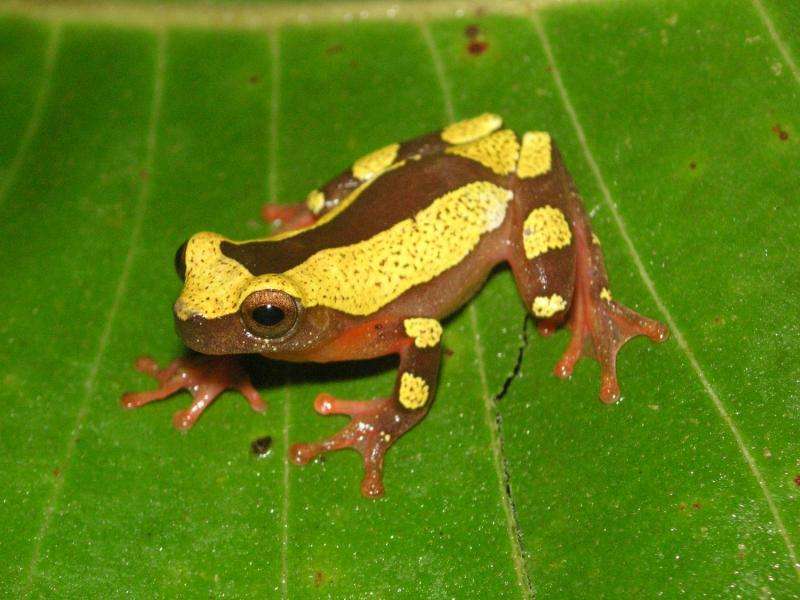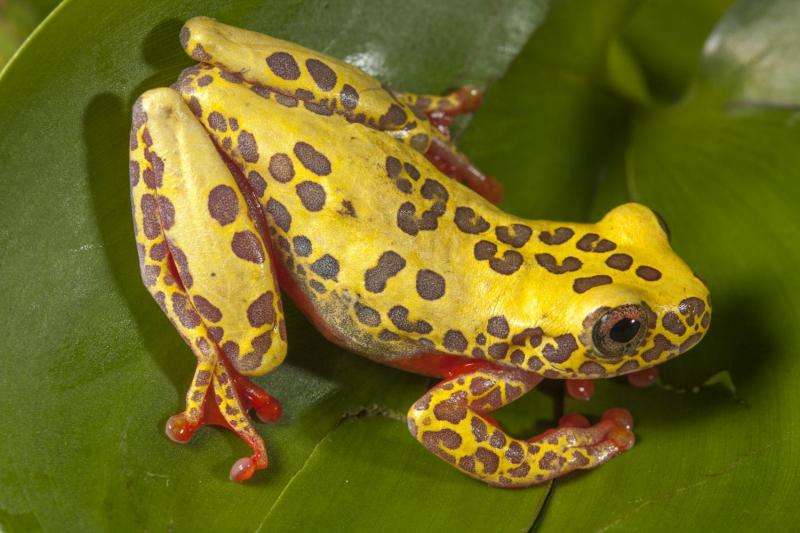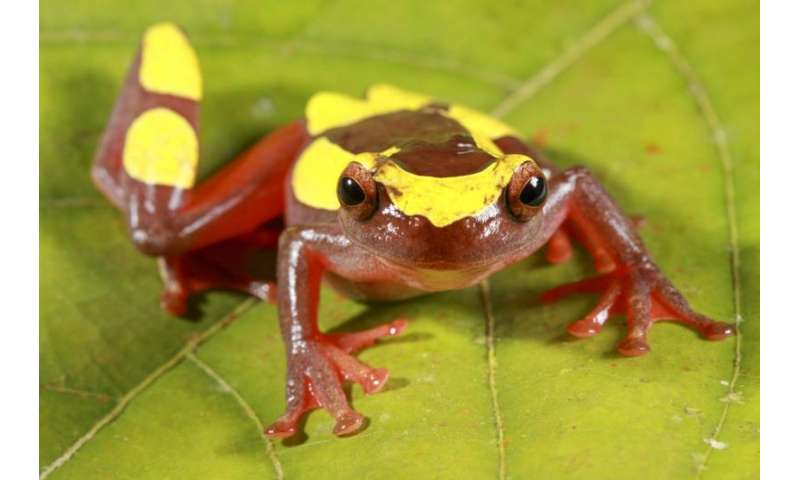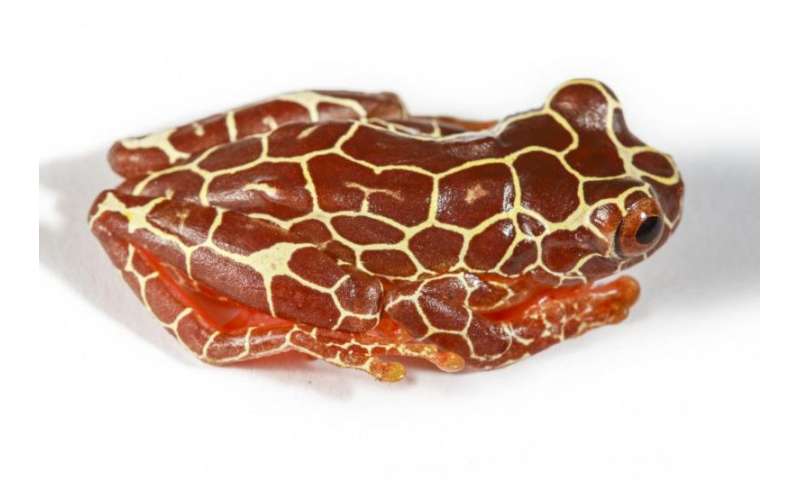Clown tree frogs—newly discovered and already threatened?

An international team of scientists discovered two new species of clown tree frogs in the Amazon region. Until recently, these colorful amphibians had erroneously been considered part of another species. Now, DNA studies and an analysis of the calls of the examined populations revealed a much higher diversity within this group of frogs. Due to their small distribution areas, it is likely that the newly discovered species are threatened, but the determination of their protection status is currently still pending. In their study, published today in the scientific journal PloS ONE, the scientists from six countries clearly show that a complete species inventory is only possible by means of international cooperation.
In the past decades, more than 810,000 square kilometers of rainforest have been destroyed in the Amazon region, and every day, species from all animal phyla disappear from this area. "Our new study shows once again that we are not even close to knowing the actual species diversity of South American frogs and that even supposedly widespread species may be endangered," explains Marcel Caminer, the study's lead author from the Universidad Católica del Ecuador and he continues, "During expeditions to six Amazonian countries, we examined the two clown tree frog species Dendropsophus leucophyllatus and Dendropsophus triangulum, which were hitherto considered 'universal' species, in greater detail and were able to show that they do not constitute two, but at least five and perhaps as many as seven different species – two of which we were able to describe for the first time."
Clown tree frogs are a widespread group of frogs primarily found in the Amazon basis, but also in adjacent savannas. They owe their popular name to their remarkably bright colors. The newly discovered species occur in Bolivia and Peru and could only be revealed as separate species with the aid of "integrative taxonomy." "We compared morphological and genetic information as well as the frogs' calls with each other – and through a combination of the different methods we were then able to delimit the new species and show that the two previous species actually comprise an entire species complex", explains Dr. Martin Jansen of the Senckenberg Research Institute in Frankfurt. He is particularly thrilled by the discovery of a new species on the grounds of the "Chiquitos" research station, which is co-run by Senckenberg. "This beautiful frog serves as a "flag ship" that underlines the importance of biological field stations and the benefits of observing a region's nature over a period of many years, especially in the unexplored areas of mega-diversity countries."

The study, published on today's date, shows that the number of frog species is still greatly underestimated, particularly in the Neotropics. The reasons for this are the vast size of the Amazon basin and the lack of an area-wide, comprehensive scientific collection. Marcel Caminer comments as follows: "Amazonia is threatened by numerous influences. On the one hand, there is deforestation, mining and oil production; on the other hand, the global climate change. Therefore, it is important to achieve a complete species inventory in order to undertake the subsequent steps toward the protection of this biodiversity."
Even the two newly discovered clown tree frog species are likely threatened already: their distributions areas have a very limited extent and are endangered by habitat destruction. Jansen adds, "Only once we truly know all species and their distribution areas, will we be able to make well-founded statements regarding the effects of such factors as climate change, for example. However, the largest threat to amphibians worldwide continues to be the destruction of their habitats. Our study shows that effective protection measures require prior knowledge of the actual diversity of species and the study of their actual spatial distribution. To achieve this, we need a larger number of experts – taxonomic research is in higher demand today than ever before."
-

Not a “universal” species after all: Dendropsophus triangulum. Credit: Santiago R. Ron -

Dendropsophus triangulum. Credit: Santiago R. Ron -

But not only their coloration aids in delimiting the different species of frogs; their calls and genetic makeup also play a decisive role. The image shows Dendropsophus triangulum. Credit: Diego Quirola



















